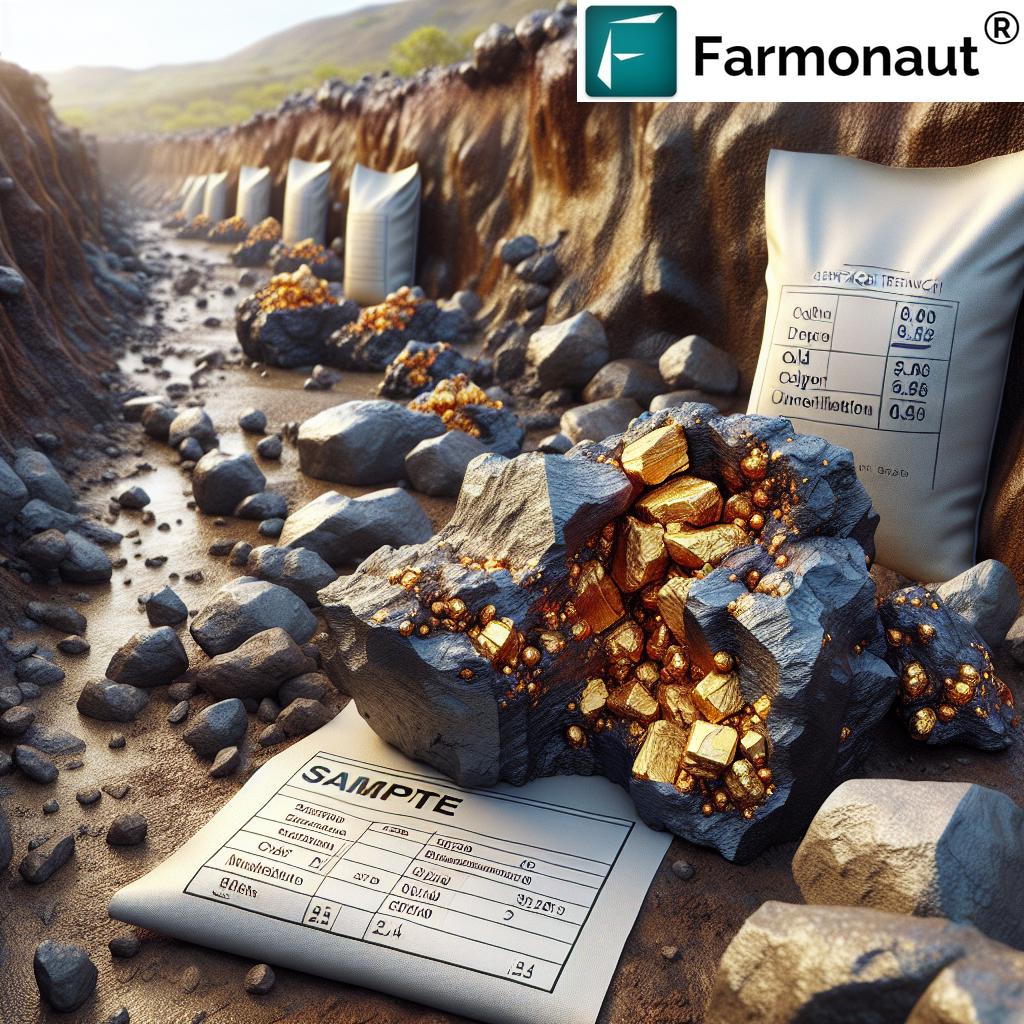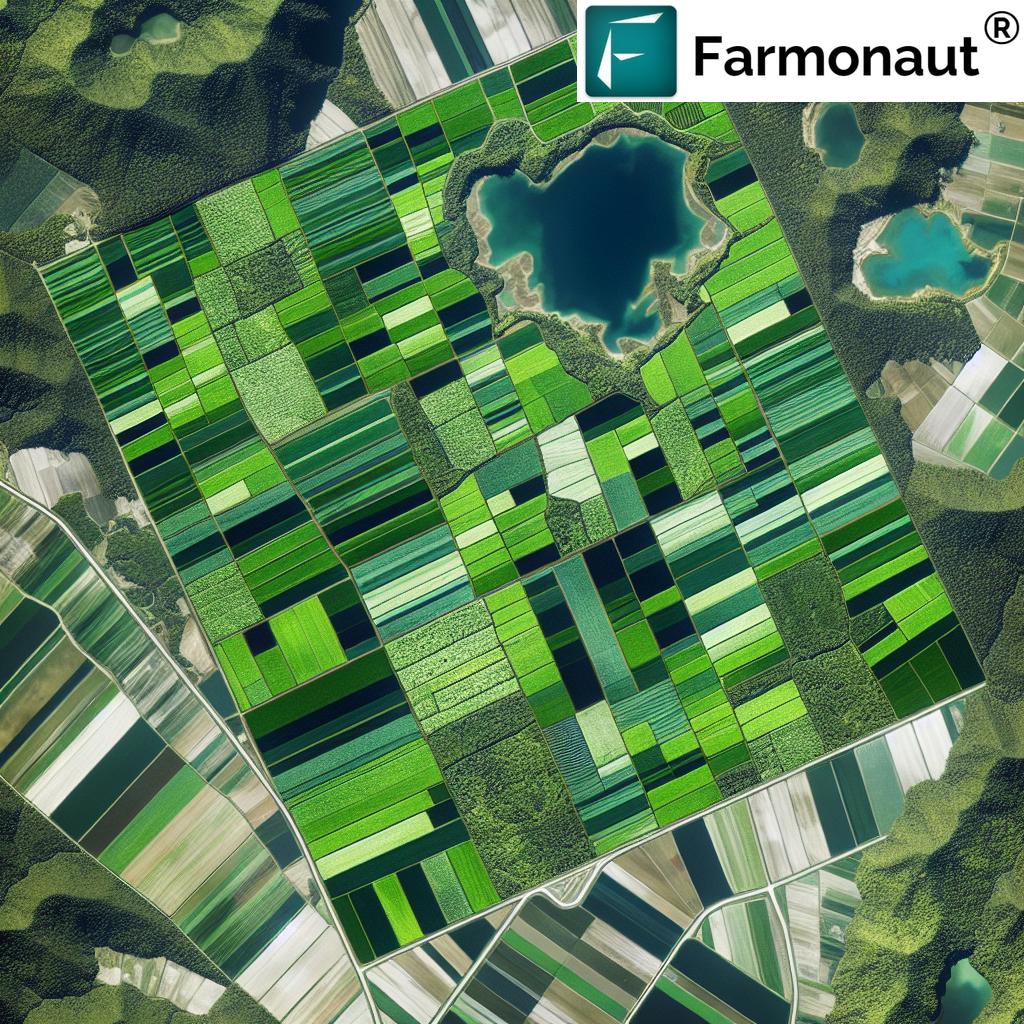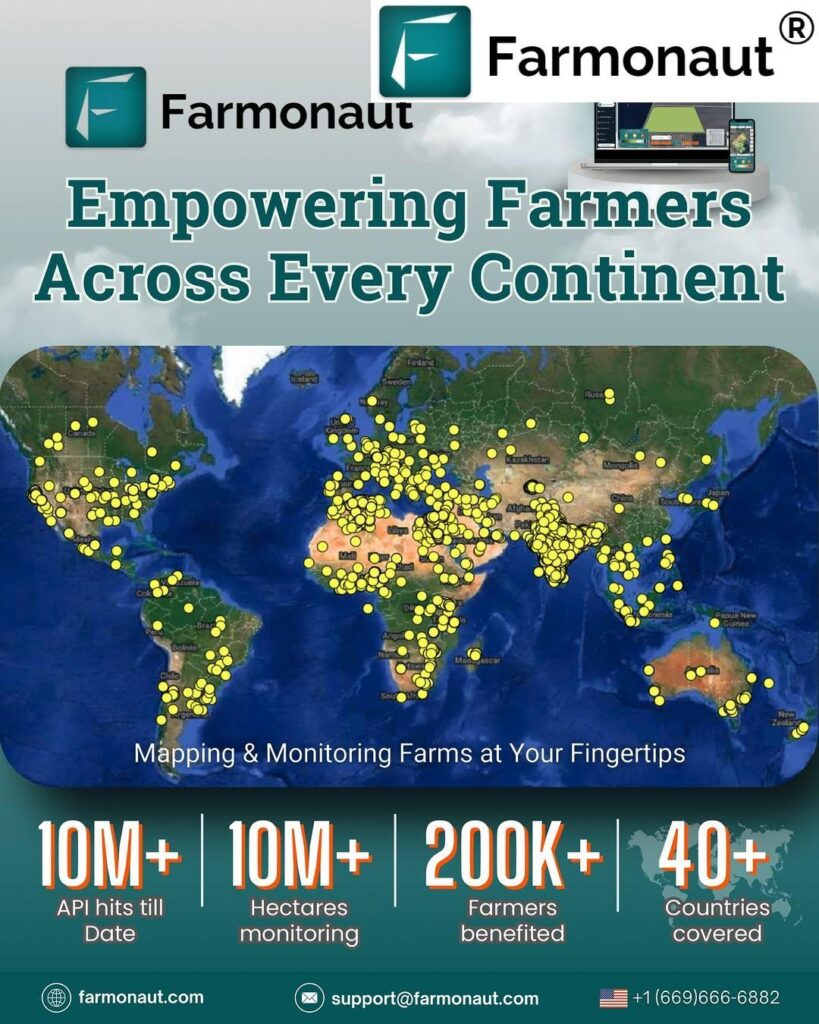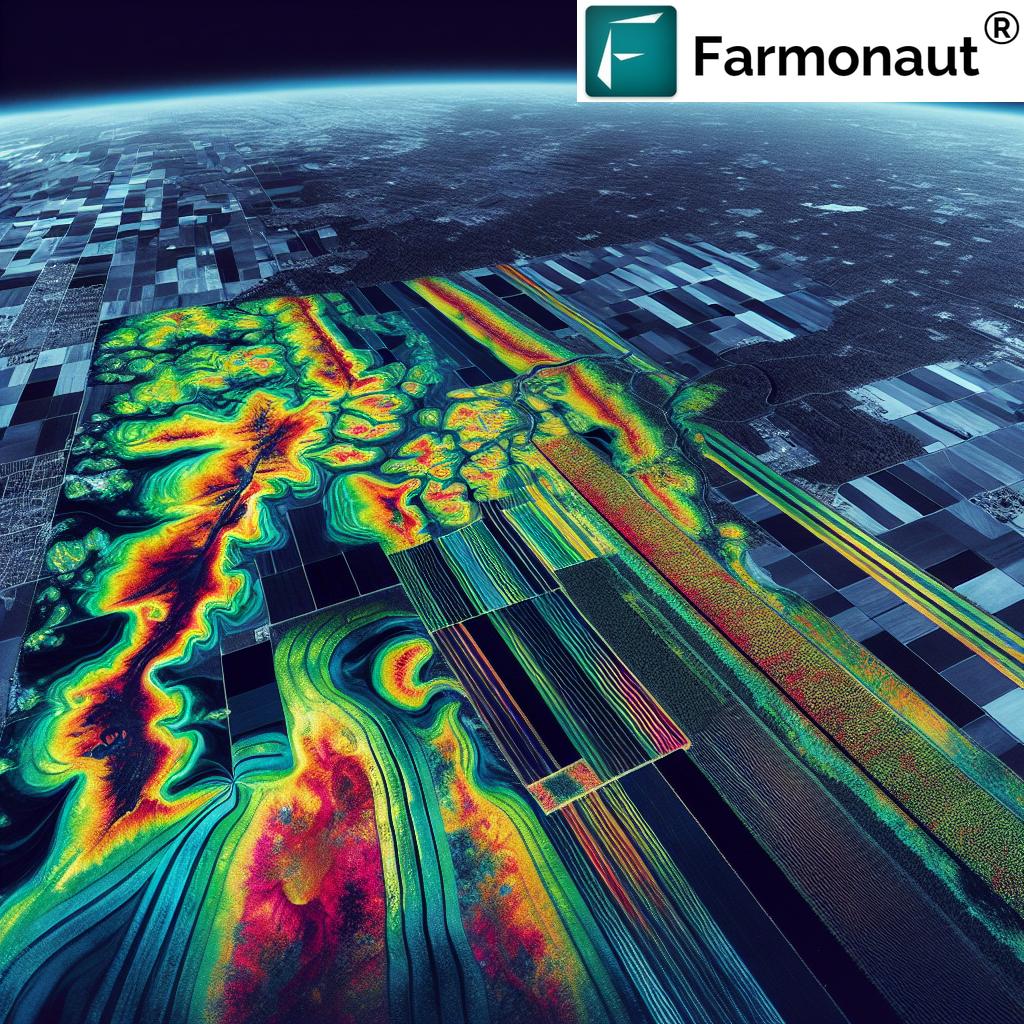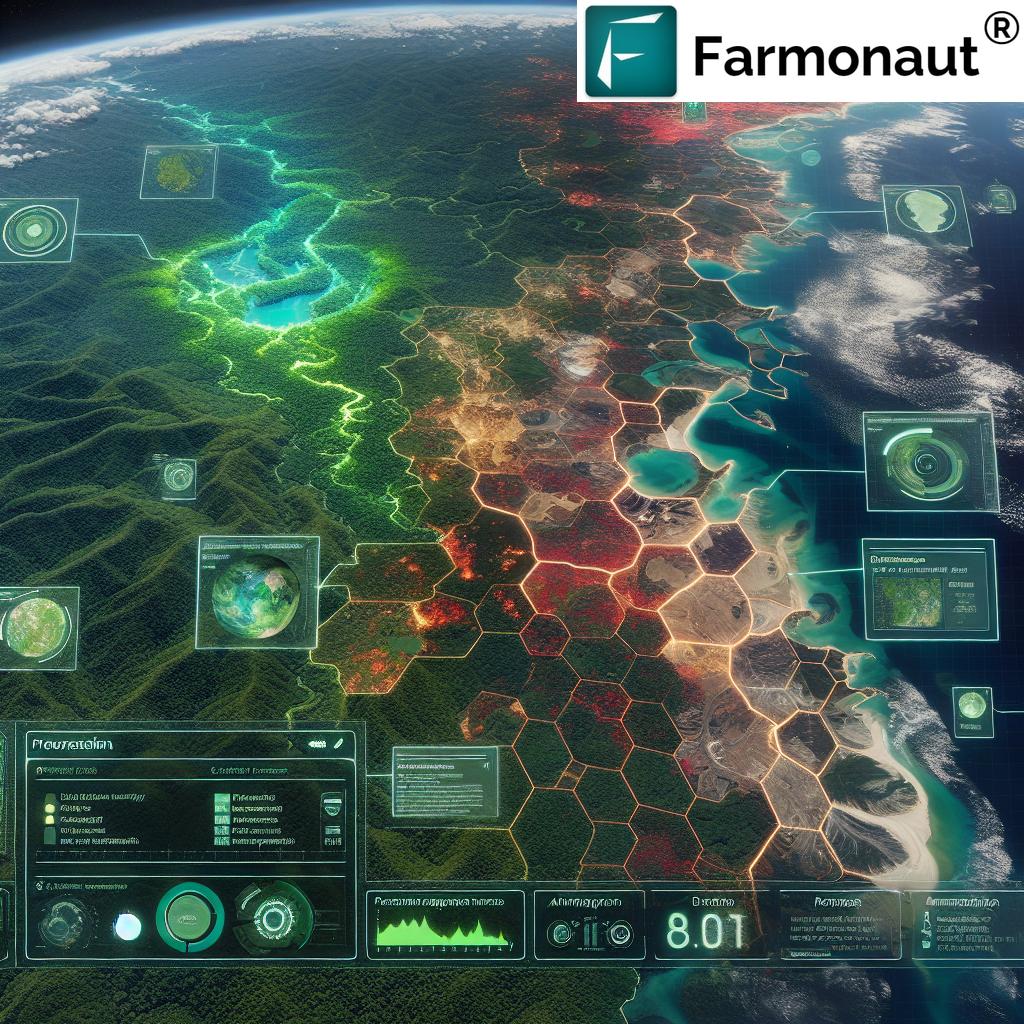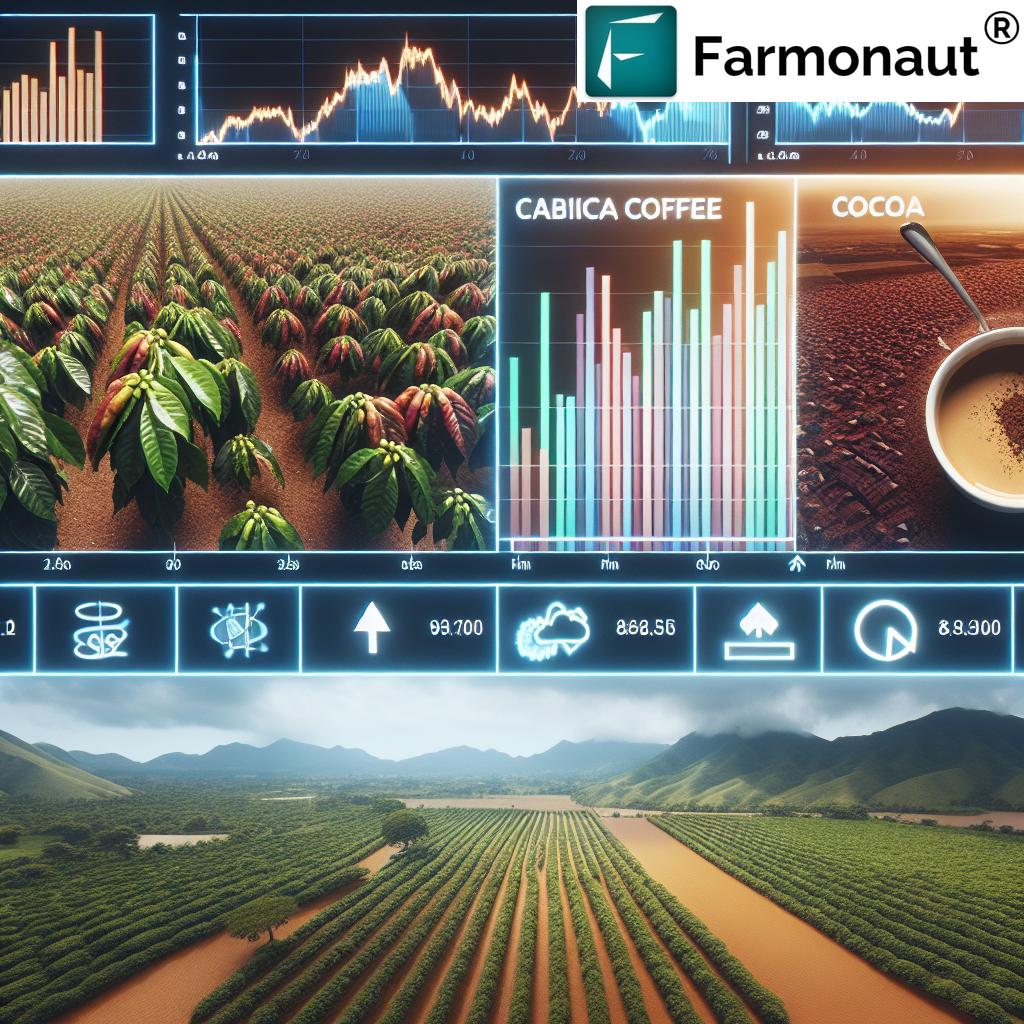New Copper Zones Discovered in Dominican Republic Gold Exploration
“Rock sampling in the Dominican Republic revealed copper zones with grades up to 1.2% Cu in recent gold exploration.”
- Introduction: Unveiling Copper Mineralization in the Dominican Republic
- Project Overview: The Juan de Herrera Project and Its Strategic Significance
- Rock Sampling Techniques in Modern Mining Exploration
- Surface Trench Sampling Results: Centro Zone Highlights
- Geochemical and Geophysical Anomalies: Data-driven Exploration
- Copper Mineralization Zones Summary Table
- Future Drilling Targets and Exploration Prospects
- Integrating Technology in Mineral and Agricultural Exploration
- Farmonaut Subscription Plans
- FAQ about Gold and Copper Exploration in the Dominican Republic
Introduction: Unveiling Copper Mineralization in the Dominican Republic
Gold exploration in the Dominican Republic is entering a remarkable new phase as we uncover fresh copper mineralization zones in the Juan de Herrera project. On April 22, 2025, from Vancouver, B.C., Precipitate Gold Corp. announced the results from meticulous surface rock sampling techniques and trench analysis in the Centro Zone. This news release signifies not only the identification of new high-grade copper-rich targets but also outlines strategic drilling plans that fortify the Dominican Republic’s standing as a premier mining jurisdiction.
Our ongoing field exploration within this 100% owned property continues to demonstrate the unique marriage of gold discovery and copper resources, a hallmark of the region’s volcanic geology. These advances set the stage for future economic development, encourage further mineral property exploration, and spotlight the critical role of surface trench sampling, detailed soil sample analysis, and advanced geochemical-geophysical mapping.
The latest findings highlight how gold exploration in the Dominican Republic is leveraging modern science and logistics to open promising new mining frontiers, ultimately offering increased potential for drilling exploration targets and robust mining concessions within the region.
Project Overview: The Juan de Herrera Project and Its Strategic Significance
At the heart of these discoveries lies the Juan de Herrera Project, a wholly owned mineral property of Precipitate Gold Corp. This expansive concession comprises approximately 12,706 hectares in San Juan Province—strategically located adjacent to GoldQuest Mining’s Romero gold-copper project in the Upper Cretaceous-aged belt known as the Tireo Gold Formation. Over the past decade, nearly 5.0 million gold equivalent ounces have been delineated and advanced in this prolific terrain, setting a powerful precedent for continued exploration.
Our property’s unique geological context—rich in intermediate sulphidation epithermal and VMS (volcanogenic massive sulfide) styles—makes it an ideal environment for both gold and copper mineralization. Numerous historical and current findings from geochemical anomalies mining and soil sample analysis further establish Juan de Herrera as one of the Dominican Republic’s premier gold and copper projects, offering vast upside for investors, mining professionals, and local economic development alike.
The region’s drilling targets are not only delineated by extensive fieldwork but are being continually redefined by the latest rounds of surface rock sampling, trenching, and geophysical surveys.
Rock Sampling Techniques in Modern Mining Exploration
An essential component of our mineral property exploration is the rigorous rock sampling techniques utilized throughout the Juan de Herrera concessions. During our recent campaigns, surface rock samples and hand trench sampling were methodically collected across target zones, including the newly identified Centro Zone and the significant Southeast Zone.
To ensure reliable and reproducible results, all samples were bagged, sealed, and transported directly to the Bureau Veritas (facility) in Maimon, Dominican Republic for preliminary preparation procedures. The steps include:
- Drying and Crushing: Samples from rock and soil are dried, then crushed to over 70% passing 2mm mesh.
- Sample Splitting: Crushed material is split using a riffle splitter, producing a 250-gram sub-sample for further work.
- Pulverization: Sub-samples are pulverized to minus 200 mesh (74μm), forming finely ground pulps fit for analysis.
- Chemical Digestion: For multi-element examination, a 15-gram sub-split undergoes aqua regia digestion and subsequent multi-element ICP-ES/MS analyses.
- Fire Assay for High-Grade: Samples containing more than 2 g/t gold or 5000 ppm copper receive fire assay analysis, gravimetric finish, or even 4-acid digestion for selectivity and accuracy.
All analyses are performed at Bureau Veritas’s ISO 9001 accredited facility in Vancouver, Canada, with excess rejects and pulps securely stored for traceability. This meticulous workflow underscores the importance of proper preparation and analysis in mineral property exploration, lowering the risk of securities misreporting and enhancing the confidence of our findings.
Surface Trench Sampling Results: Centro Zone Highlights (Gold Exploration Dominican Republic)
In our latest surface trench sampling campaign within the Centro Zone—now a priority target in the Juan de Herrera project—we have achieved remarkable findings that underscore the mineral wealth of this volcanic terrain. Among the most outstanding interval results:
- Trench sampling yielded 4.4% copper and 0.3 g/t gold over 1.8 metres.
- This result was part of a larger mineralized interval: 1.6% copper and 0.2 g/t gold over 5.3 metres.
- A broader, lower grade interval was also confirmed: 0.4% copper and 0.2 g/t gold across 26.3 metres.
These findings are of special relevance when viewed alongside the 113 surface rock grab samples collected to date, which yielded values from nil to 2.0% copper and up to 2.6 g/t gold. Our sampling focused on andesite volcanic lithologies showing variable silicification and pyrite-chalcopyrite mineralization, a classic hint of productive copper-gold zones in geology.
The Centro Zone is located roughly 425 metres east of the existing Southeast Zone, where previous trenching produced up to 13.0% copper and 0.9 g/t gold in rock grab samples and trench sampling yielded 2.8% copper over 3.0 metres within a wider 8.0m section averaging 1.3% copper. These results build a strong case for both immediate and expanded drilling programs in the region.
Geochemical and Geophysical Anomalies: Data-driven Exploration
The success of our exploration hinges on state-of-the-art geochemical and geophysical surveys. Our crews have mapped and sampled across a trend of about 1.2 kilometres long by 100 meters wide, focusing on three robust gold-in-soil anomalies within the Centro Zone—each offering distinct mining potential.
These clusters coincide with:
- Strong resistivity high anomalies: Potentially signaling silica alteration indicative of mineralizing systems.
- Modest IP chargeability high anomalies: Suggesting zones of increased sulfide content—often correlated with copper and gold mineralization.
Combined with detailed rock sampling techniques and comprehensive soil sample analysis, our approach integrates robust field geology with high-resolution geochemical-geophysical mapping to pin down new drilling exploration targets.
The ability to consistently delineate such anomalies is what positions the Dominican Republic—and particularly San Juan Province—as a top-tier destination for major gold and copper mining concessions.
Copper Mineralization Zones Summary Table
To provide a concise overview, we have compiled the results of reported surface and trench sampling from major sites within the Juan de Herrera property. This table allows mining professionals, analysts, and stakeholders to quickly compare the significance of each gold and copper mineralized zone, their sampling methods, and potential for future drilling:
| Zone Name | Location (Relative Area) | Copper Concentration (%) | Gold Concentration (g/t) | Sampling Method | Sample Count | Significant Results | Future Drilling Target |
|---|---|---|---|---|---|---|---|
| Centro Zone | ~425m East of Southeast Zone, Juan de Herrera | Up to 4.4% | Up to 0.3 (trench); 2.6 (grab) | Surface trench, Rock grab, Chip sample | 113 | Yes | Yes |
| Southeast Zone | Juan de Herrera | Up to 13.0% | Up to 0.9 | Rock grab, Trench sample | Not stated | Yes | Yes |
| Gold-in-Soil Anomaly Cluster | Centro Zone, 1.2km Trend | — | — | Soil sample analysis | Not stated | Yes | Potential |
Future Drilling Targets and Exploration Prospects (Mining Concessions Dominican Republic)
The ongoing results at the Juan de Herrera property empower us to confidently chart the next steps for mining development in the Dominican Republic. Both the Centro Zone and the Southeast Zone have emerged as stand-out targets, each delineated through rigorous sampling and compelling geochemical anomalies mining.
Our priorities moving forward include:
- Finishing advanced surface mapping and sampling at Centro and adjacent mineralized sites.
- Designing precision drilling programs to penetrate high-grade intervals and further confirm the lateral and vertical extent of mineralization.
- Engaging advanced carbon footprinting solutions, like Farmonaut’s real-time monitoring platform, to ensure our exploration leaves a minimal environmental impact.
- Considering fleet management tools (such as Farmonaut Fleet) for operational logistics, making movement of teams and equipment across vast concessions more efficient.
Advanced technology, strong local geological context, and proactive environmental management will all contribute to making future mining activities in Juan de Herrera not only profitable, but responsible and sustainable.
Integrating Technology in Mineral and Agricultural Exploration
While the world of mineral exploration depends on physical sampling, mapping, and laboratory analysis, we recognize that digital and satellite-based technology offers unparalleled support across agriculture and mining.
Farmonaut is revolutionizing resource management and traceability for agricultural businesses globally. Our solutions are built to complement mineral and land resource exploration:
- Satellite-Based Crop Monitoring: Leverage multispectral imagery to support both farm and land use investigations. Farmonaut’s platform enables clients to track vegetation health, soil moisture, and field productivity remotely via Android, iOS, and web apps.
- AI-Powered Advisory: The Jeevn AI advisory system delivers ultra-specific crop and land advice using real-time data—empowering both farmers and land concession operators to optimize resource usage and boost productivity.
- Product Traceability: Farmonaut’s blockchain-based product traceability technology is instrumental for sectors like mining and agriculture, building trust in global supply chains.
- Resource and Fleet Management: Streamline logistics, reduce operational delays, and minimize costs with efficient resource management tools—all powered by intuitive dashboards and mobile apps.
- Carbon Footprinting: Farmonaut enables real-time carbon footprint tracking for agribusinesses, mining, and governmental sectors—facilitating sustainable practices and compliance with environmental regulations.
- API Integration: Developers and businesses can extend data capabilities through Farmonaut’s robust APIs. Explore our API capabilities or integrate via API Developer Docs for advanced analytics, crop monitoring, and weather data fusion.
Discover more about large scale farm management and how advanced digital solutions can empower mineral and agriculture professionals alike.
Farmonaut Subscription Plans
Whether your focus is large-scale farming, research, land monitoring for mining or agricultural use, Farmonaut offers flexible and affordable subscription packages. Choose what fits your operation, from API-only access to full-featured dashboards for fleet, resource, or carbon footprint management.
Below you can review live pricing and subscribe directly:
FAQ: Gold and Copper Exploration in the Dominican Republic
What are the most recent results of gold exploration Dominican Republic?
Our recent news release highlighted the identification of new copper mineralization zones within the Centro Zone of the Juan de Herrera project. Surface trench sampling reported up to 4.4% copper and 0.3 g/t gold over 1.8 metres. Broader intervals confirm a significant presence of both copper and gold, supporting future drilling exploration targets.
Why are geochemical and geophysical anomalies critical in mining?
Geochemical anomalies (such as gold-in-soil clusters) and geophysical signals (resistivity and chargeability highs) help to pinpoint high-potential zones for further investigation. By overlaying physical sampling with this analytical data, we can focus our resources on the most prospective targets and accelerate successful discoveries.
What advanced rock sampling techniques were used at Juan de Herrera?
We employed rigorous surface rock collection, hand trench sampling, chip sampling, and soil sample analysis. All samples were systematically bagged, sealed, and transported to ISO-certified labs for multi-element ICP-ES/MS analysis, fire assays, and aqua regia digestion. These methods maximize analytical accuracy for mineral property exploration.
What is the economic significance of these findings?
Positive trench and surface sampling results support immediate and future drilling and potentially pave the way for profitable mining concessions in the Dominican Republic. The increasing delineation of high-grade copper and gold zones enhances the project’s economic attractiveness and supports ongoing and future investments.
How can technology (like Farmonaut) support mining and agriculture?
Technologies such as satellite-based monitoring, carbon footprint tracking, AI-powered advisory, and blockchain traceability allow for more efficient, sustainable, and transparent management of both mineral and agricultural resources. These solutions support decision-making, operational logistics, and supply chain integrity in both industries.
Where can I find more information about Precipitate Gold Corp. and Juan de Herrera?
Visit the official company website at www.precipitategold.com for historical and recent maps, figures, and comprehensive project data. All updates and results, including detailed gold and copper exploration news releases, are available there.
Which Farmonaut features help my land or resource business?
Farmonaut provides a robust set of digital tools, including crop health monitoring, blockchain-based traceability, fleet and resource management, API access, carbon footprinting, and large-scale farm management—all accessible across web and mobile platforms. Explore solutions tailored to your needs via the Farmonaut website.
Conclusion
The adventures in gold exploration Dominican Republic have now witnessed the dramatic emergence of robust copper mineralization zones backed by reliable rock sampling techniques and comprehensive surface trench sampling. The synergy of mineral property exploration, advanced soil sample analysis, ongoing drilling, and cutting-edge logistics and digital integration is propelling mining concessions like Juan de Herrera to new heights.
As our team looks forward to further results in the coming year, we emphasize both the economic and environmental advantage of integrating modern technology—such as that offered by Farmonaut—into every step of exploration, from the surface to the core. The future of mining in the Dominican Republic is not just about discovering resources, but about harnessing knowledge and innovation to deliver value sustainably for generations to come.

